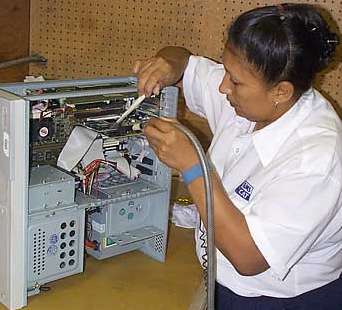How Are Special Materials Recovered After a Disaster?
Tue, May 27, 2014
By: Jim Beran

Below is a guest blog by Mark Rocco VP of Document Recovery and Government Contracts, of BMS CAT. This is the fourth blog in a series of posts this month about preparing business documents for hurricane season and other natural disasters.
If a natural disaster or unexpected event impacts your business, there are ways to help protect damaged items. When it comes to special materials such as x-rays, media, microfilm or microfiche, the right recovery plan can improve the state of damaged items. Take a look at how special materials are recovered after a disaster and what you can do to begin the process.
First, call Gilmore Services/BMS CAT immediately and discuss your circumstances. Do NOT let the film start to dry. What do we mean by “Special Materials”? That covers the gamut of non-paper materials. Primarily we are referring to two major categories.
One is emulsion based and the other one is magnetic particle based. Emulsion based is movie film, X-rays, micro film & fiche and photographs. The other category is recording tapes for audio or computer back up. Both modern media is usually made on a polyester film. The danger exists when either media becomes wet. This causes the emulsion to become soft and “tacky”. If allowed to dry, it will chemically bond to whatever it is touching. Magnetic media doesn’t stick as radically, but enough so that the data or sound is affected.
If it is a small loss and your disaster plan calls for you to prepare the boxes for shipping, use the following recommendations for a successful media recovery project.
First, DO NOT start to try to dry the documents with air conditioning, heat or dehumidifiers. Keep them out of the sunlight and air movement. You can rinse excess mud and silt off first if you are involved in flooding. Get sturdy boxes and double line them with plastic trash bags. Place your media inside the plastic bags, add about a quart of distilled water and tie the plastic bags shut.
Next, ship them next day air to BMS CAT for processing on Kodak film processing equipment. This can be called restoration. BMS CAT will re-set the film emulsion and oftentimes improves the quality of the tapes. The magnetic media will also be reprocessed and the tension reset on the tape.
Finally, if your loss is larger and you are waiting for BMS CAT to arrive, then sit back, relax and work with Gilmore Services on your inventory priorities. Review your retention schedules. BMS CAT is trained for fast emergency response!
For more information about disaster recover, find out more about BMS CAT.
Meet your disaster recovery team on Thursday, May 29 at So Gourmet Kitchenry, 407 South Palafox Street, Pensacola, FL. Take the opportunity to meet & greet your disaster recovery team in a relaxed setting before you have a crisis situation! Stop by between 5:30-7:30pm to meet BMS CAT and Gilmore Services, hors d'oeuvres and beer & wine provided.
Do you have questions?
We welcome you to contact our records management company to find out more about document shredding and records storage and disaster recovery services.